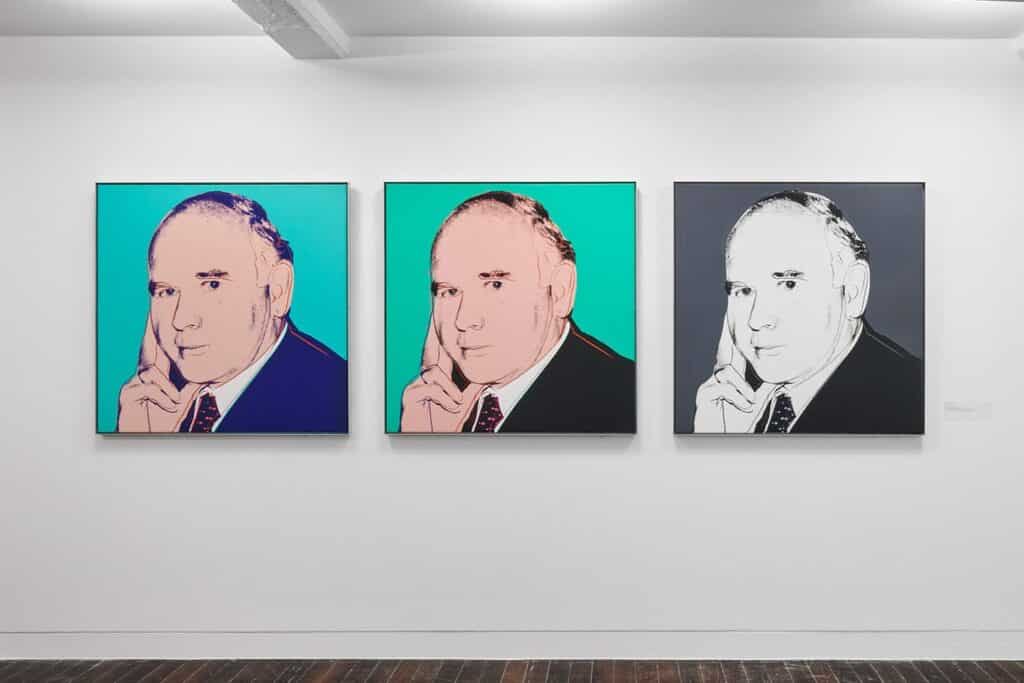Opening: Thursday, July 10, 2025, 6pm
The hundredth anniversary of the birth of the entrepreneur, art collector, and art patron Peter Ludwig falls on July 9, 2025. It was from their base in Aachen that he and his wife, Irene Ludwig (née Monheim, 1927–2010), built one of the world’s most significant art collections.
Peter Ludwig (1925–1996) was among the world’s most influential art collectors. Born in Koblenz to a lawyer father and a mother from the Klöckner industrial family, in 1946 he went on to study art history, archaeology, prehistory, and early history at the University of Mainz, where he met a fellow student who was studying the very same subjects: Irene Monheim (1927–2010), daughter of the Aachen-based chocolate manufacturer of the same name. They were bound by a deep love of art, but also by a profound knowledge of art history and art’s developments up to the present day. What proved formative for Peter Ludwig, however, was his encounter with Pablo Picasso’s work; in 1950, he earned his doctorate with a dissertation on the artist’s “Menschenbild”. Following his marriage to Irene in 1951, he joined the management of the Aachen-based Monheim family business in 1952. From that point on, the couple’s life unfolded between two poles: art and cocoa.
Peter Ludwig had a knack for combining business acumen with a passion for collecting. Leonard Monheim AG, then one of the largest chocolate and confectionery producers in West Germany, gave the Ludwigs enough financial freedom to use Aachen as a base for growing their unique collection of international art. At the time of Peter Ludwig’s death in 1996, it comprised approximately 14,000 works. Today, these are held as permanent loans and gifts in over thirty institutions, across seven countries on three continents. The estate of the couple is now managed by the Aachen-based Peter and Irene Ludwig Foundation.
To mark this anniversary, the Ludwig Forum presents Zeitbild, Provokation, Kunst [Image of Time, Provocation, Art] in two spaces within the museum, honoring the collector’s achievements and his dedication to contemporary art both in Aachen and far beyond. Around the entrance of the museum’s library, a selection of historical photographs, films, and archival materials illustrates the significance Peter Ludwig had (and still has) for the Ludwig Forum. Photos of renovations of the former umbrella factory, of the opening celebrations, and of the collector stood before “his” artworks underscore the Ludwig Forum’s close connection both to Peter and to Irene Ludwig. Operating more in the background, Irene nevertheless played an active role in building the collection and worked to network and support the growing number of Ludwig Institutions, culminating in her establishment of the Peter and Irene Ludwig Foundation in 1997, the year after her husband’s death.
Works by East German painter Sighard Gille and West German artist Jörg Immendorff recall the Bilderstreit—debate over images—that Peter Ludwig fuelled in 1977 with his support for the art of East Germany. The collectors couple was deeply committed to fostering understanding between East and West Germany during the Cold War (1947–1991). The two small paintings also represent the debate over whether true “art” can emerge within a closed, repressive system like that of East Germany: a discussion that remains unresolved more than thirty years after the fall of the Berlin Wall.
On the lower level of the west wing, the second part of the show focuses on Peter Ludwig’s international collecting activities. After he encountered pop art in New York in the late 1960s, contemporary art quickly became his focus. His actions were driven by the conviction that art is not only an aesthetic event, but also an expression of its time; that “the art of the world” must be made visible to overcome barriers and promote understanding between cultures. By the mid-1970s, Peter Ludwig had turned his focus to countries beyond the Iron Curtain, entering the arena of international cultural politics as “one of the most adventurous figures” in the history of collecting in West Germany (Wolfgang Becker, founding director of the Ludwig Forum).
Peter and Irene Ludwig acquired contemporary art in East Germany, the Soviet Union, Bulgaria, Cuba, Hungary, Romania, and China; these activities always involved diplomacy and contacts at the highest political levels. Their acquisitions were always accompanied by efforts to make their collection known and accessible in those countries through loans, donations, and the founding of new museums. The archival materials and artworks displayed here offer a glimpse into the Ludwigs’ international collecting activities. Andy Warhol’s portraits of the collector point to US pop art as the movement that first kindled Peter Ludwig’s enthusiasm and interest in contemporary art. Newspaper articles and photographs showcase his collecting activities in East Germany, the Soviet Union, Cuba, and China, while a small selection of artworks from the collection’s various regions exemplifies the Ludwig Collection’s unusually broad international scope for its time.
With works by Carlos Alberto Rodríguez Cárdenas, Zlatka Dabova, Donna Dennis, Juris Dimiters, Li Fan, Sighard Gille, Ralph Ladell Goings, Zhang Guilin, Li Hongren, Jörg Immendorff, Roy Lichtenstein, Kim MacConnel, Wolfgang Mattheuer, A. R. Penck, Viktor Pivovarov, Sandra Ramos, Lazaro Saavedra, Eduard Štejnberg, Stoimen Stoilov, José Toirac, Andy Warhol, Wladimir Grigorjewitsch Weisberg and Nina Ivanova Žilinskaja
Curated by Sonja Benzner and Mailin Haberland
Credits: Exhibition view Ludwig Forum Aachen, 2025, photo: Mareike Tocha.
